
In an ‘earth shattering’ revelation, scientists have uncovered evidence of a vast reservoir of water located approximately 700 kilometers beneath Earth’s surface. This hidden ocean, concealed within a mineral called ringwoodite, challenges our traditional understanding of Earth’s water distribution and the dynamics of its interior. The discovery, first detailed in the 2014 scientific paper titled “Dehydration Melting at the Top of the Lower Mantle,” has profound implications for geology, hydrology, and our comprehension of planetary processes.
Whats Under The Crust?
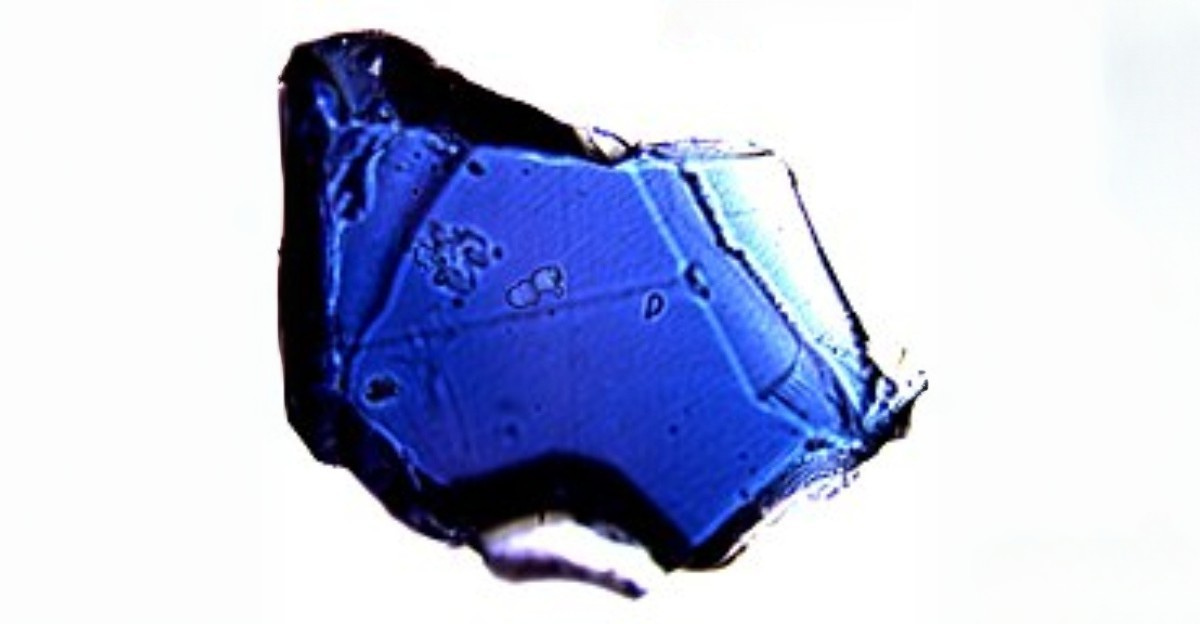
The research indicates that this subterranean ocean may contain water volumes exceeding all of Earth’s surface oceans combined. Such a finding not only reshapes our perception of Earth’s internal structure but also prompts a reevaluation of the origins and movement of water within our planet. The presence of water at such depths could influence mantle dynamics, volcanic activity, and the overall thermal evolution of Earth.
The Role of Ringwoodite
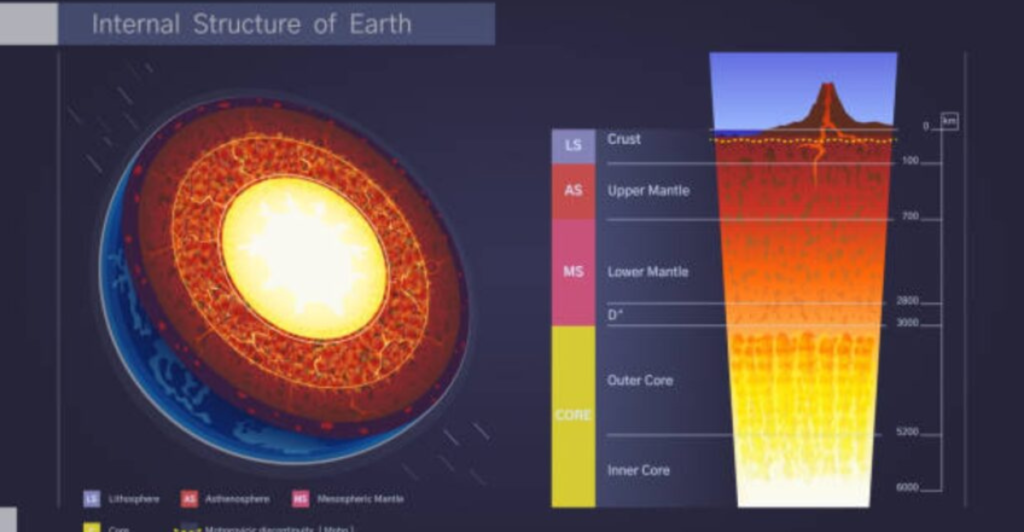
Central to this discovery is ringwoodite, a high-pressure form of the mineral olivine found in Earth’s mantle transition zone, between 410 and 660 kilometers deep. Ringwoodite has the unique ability to trap water within its crystalline structure, potentially holding up to 1.5% of its weight in water. This capacity suggests that the transition zone could harbor significant amounts of water, blurring the lines between solid rock and fluid reservoirs.
Where Is The Water?
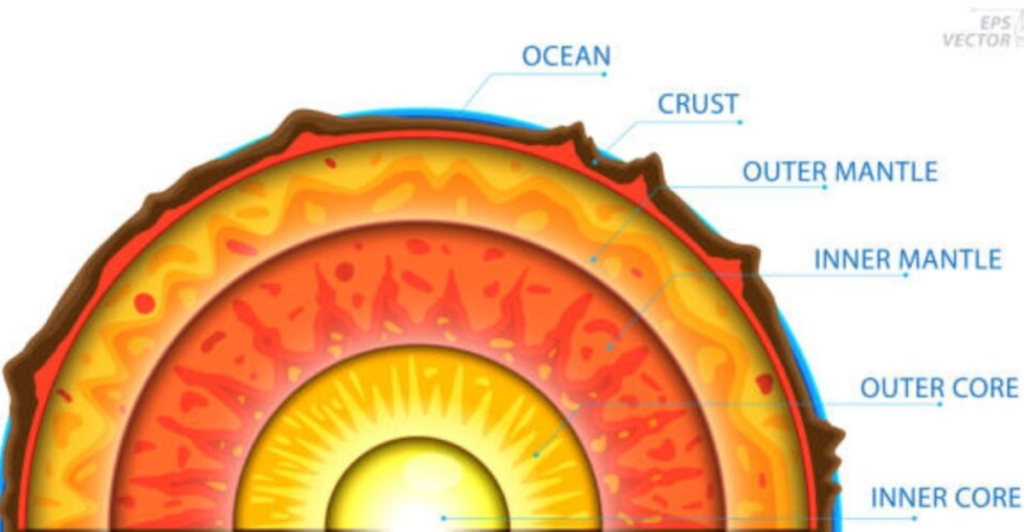
In 2014, a study led by geophysicist Brandon Schmandt and mineralogist Steven Jacobsen provided compelling evidence for this hidden water. By analyzing seismic waves from earthquakes, the team detected signs of partial melting at approximately 700 kilometers depth, indicative of water presence. Their findings, published in the journal Science, proposed that dehydration melting occurs as hydrous minerals descend into the lower mantle, releasing water and generating melt.
Seismic Evidence and Laboratory Experiments
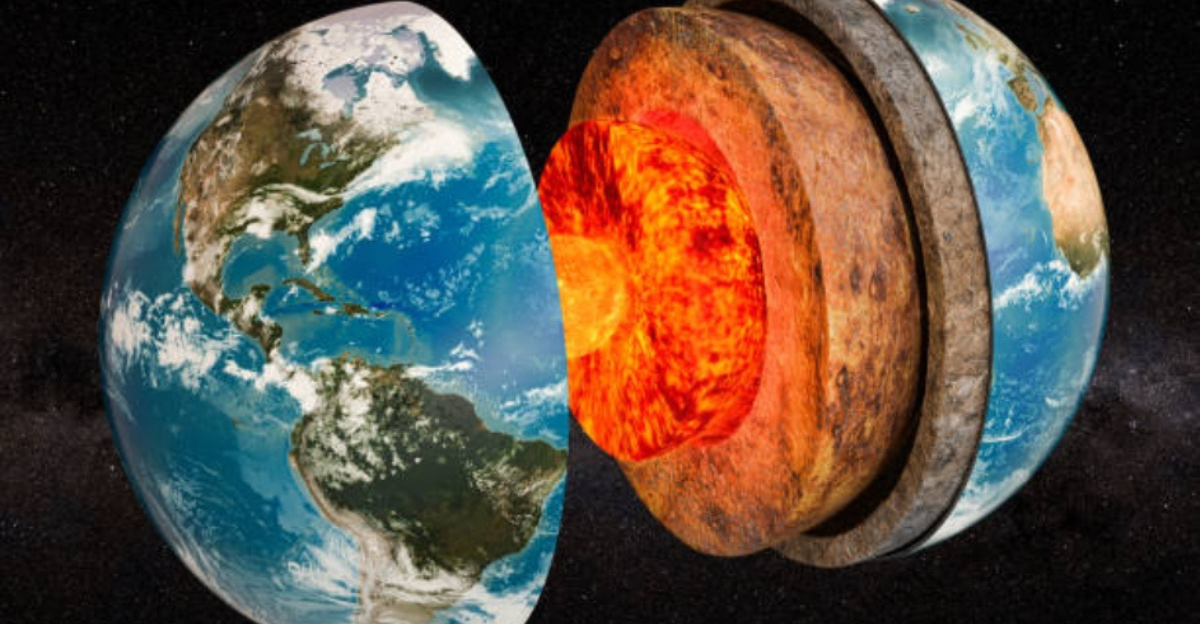
The research combined seismic observations with high-pressure laboratory experiments. Seismic data revealed areas where seismic waves slowed down, suggesting the presence of melt. To replicate these conditions, laboratory experiments subjected ringwoodite samples to extreme pressures and temperatures, confirming that the mineral releases water under such conditions, leading to melting. This multidisciplinary approach strengthened the case for a deep, water-rich region within Earth’s mantle.
Implications for Earth’s Water Cycle

The existence of such a vast internal reservoir has significant implications for Earth’s water cycle. Traditionally, the water cycle is understood as the continuous movement of water between the atmosphere, oceans, and surface. However, this discovery suggests a deeper component, where water is stored in the mantle and possibly exchanged with the surface over geological timescales. This deep reservoir could act as a buffer, influencing sea levels and climate over millions of years.
Influence on Mantle Dynamics

Water plays a crucial role in mantle dynamics by lowering the melting point of rocks and affecting their viscosity. The presence of water at these depths could facilitate the movement of tectonic plates and influence the formation of magma. This, in turn, impacts volcanic activity and the creation of new crust at mid-ocean ridges. Understanding the distribution and movement of water in the mantle is therefore essential for comprehending Earth’s geological activity.
Reevaluating Earth’s Thermal Evolution
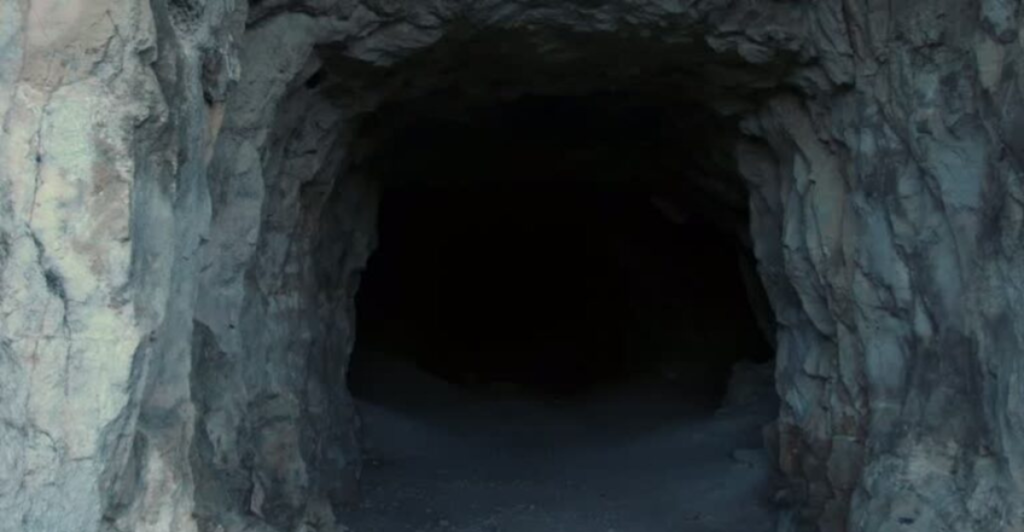
The discovery also prompts a reevaluation of Earth’s thermal history. Water affects the thermal conductivity of mantle materials, influencing heat flow from the core to the crust. A water-rich transition zone could alter models of Earth’s cooling rate and the thermal gradients driving mantle convection. This has implications for our understanding of the planet’s magnetic field generation and the longevity of its geothermal activity.
Challenges in Detection
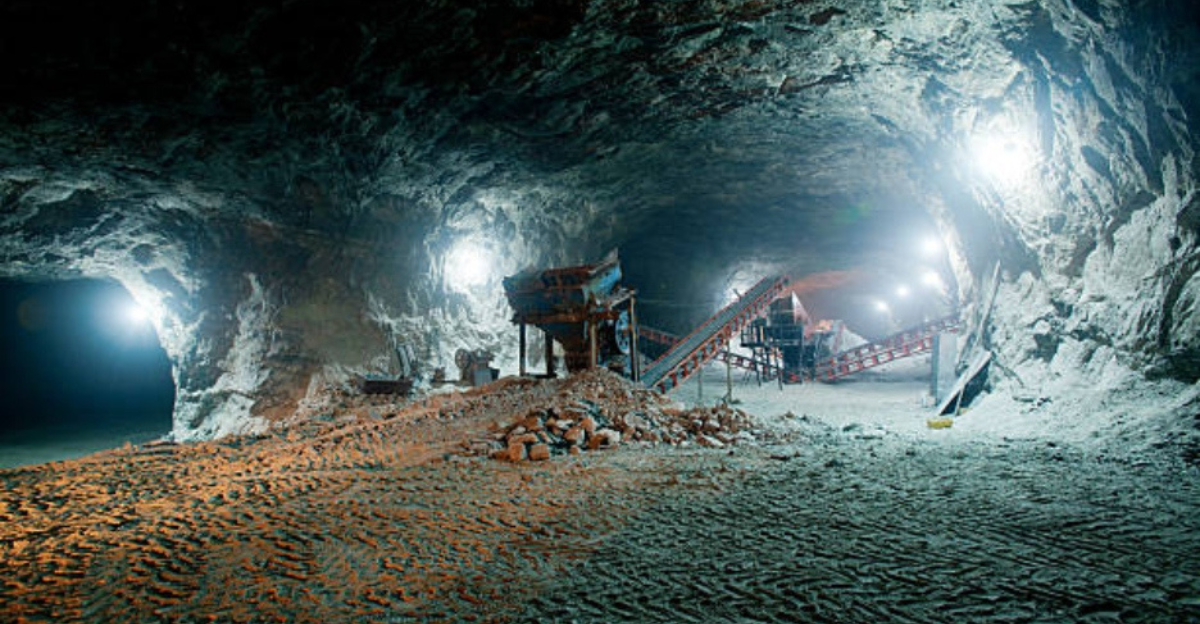
Detecting water at such depths presents significant challenges. Direct sampling is impossible, so scientists rely on indirect methods like seismic tomography and laboratory simulations. Variations in seismic wave velocities can indicate the presence of water or melt, but interpretations must be made cautiously. Advancements in technology and methodology continue to improve our ability to probe Earth’s deep interior.
Comparisons with Surface Oceans

While the hidden ocean’s volume may surpass that of surface oceans, it exists in a different state. Instead of vast liquid bodies, this water is trapped within minerals or exists as a high-pressure fluid. This distinction is crucial for understanding its role in geological processes and its potential interactions with surface water reservoirs.
Broader Implications for Planetary Science
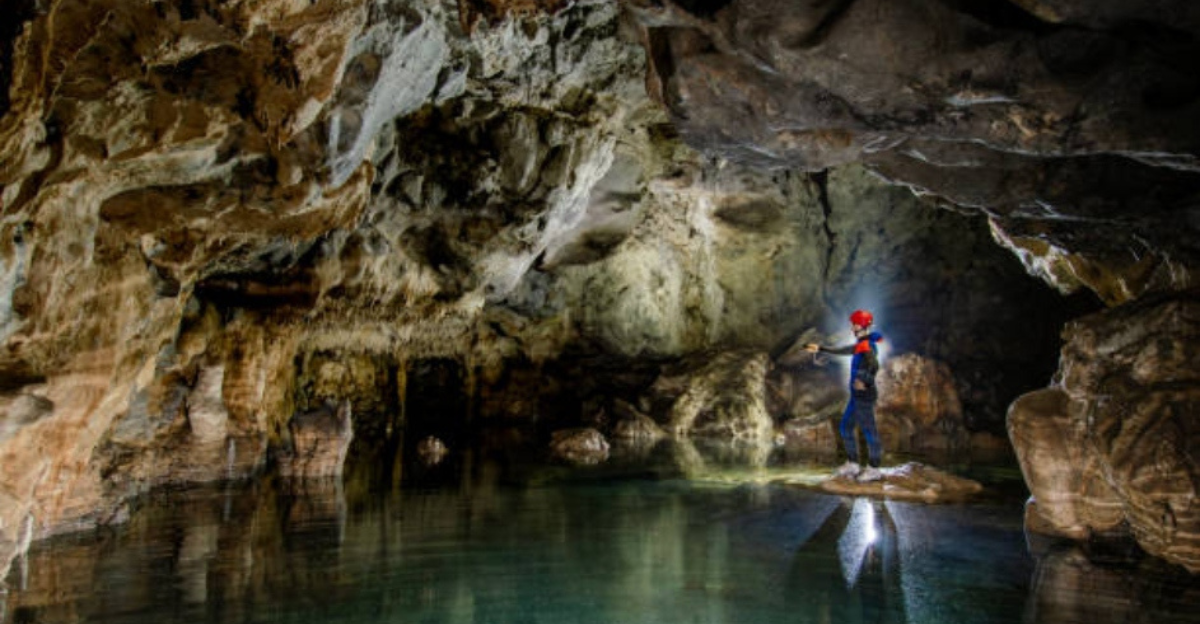
This discovery has broader implications beyond Earth. It suggests that other planetary bodies with similar compositions could also harbor deep water reservoirs. This has potential implications for the search for extraterrestrial life, as water is a key ingredient for life as we know it. Planets previously thought to be dry may possess internal water, prompting a reevaluation of their potential habitability.
Future Research Directions
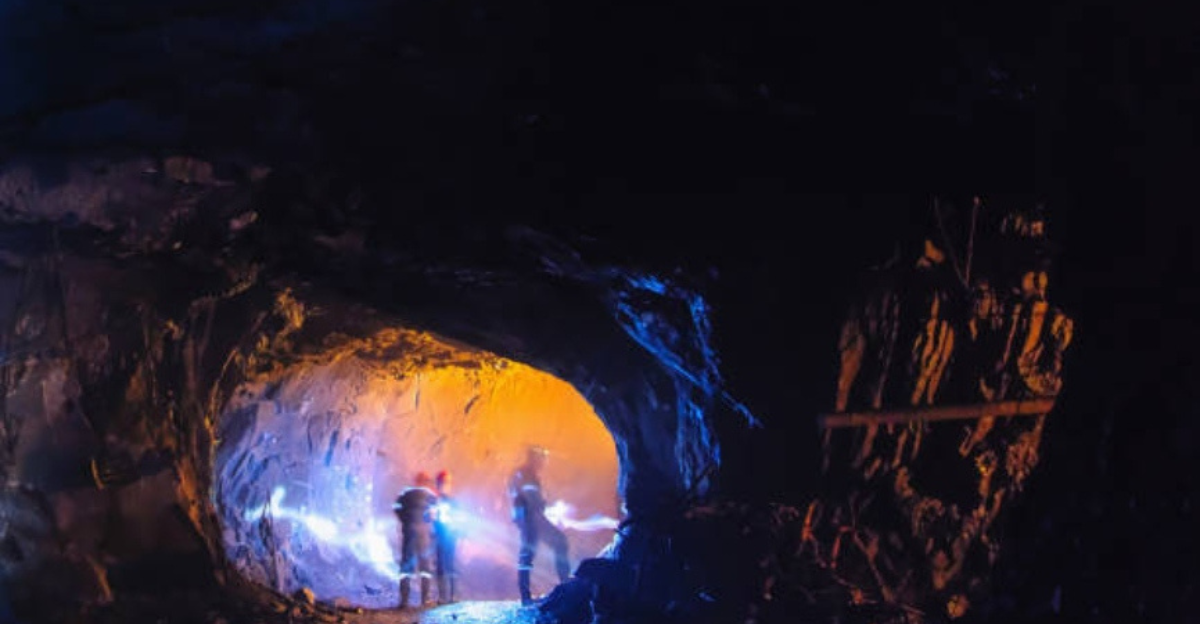
Future research aims to refine our understanding of this deep water reservoir. Scientists are developing more sophisticated models of mantle convection that incorporate the presence of water. Additionally, studies are focusing on the potential pathways for water to enter and exit the deep mantle, such as subduction zones and mantle plumes. These efforts will help elucidate the dynamic processes governing Earth’s interior.
What’s Next For Us On Earth?

The revelation of a vast, hidden ocean deep within Earth’s mantle marks a paradigm shift in our understanding of the planet’s interior. This discovery underscores the complexity of Earth’s systems and the intricate interplay between its surface and interior. As research progresses, we anticipate further insights into how this deep water reservoir influences geological processes, climate regulation, and the long-term evolution of our planet. Ultimately, the hidden ocean beneath our feet serves as a reminder of the mysteries that still lie within Earth. It challenges scientists to look deeper, think broader, and continually question our assumptions about the natural world. This discovery not only answers existing questions but also opens new avenues of inquiry into the fundamental workings of our planet.
Discover more of our trending stories and follow us to keep them appearing in your feed

Deepest Hole On Earth Permanently Sealed After 2 Billion Year Old Discovery
Massive Underwater Volcano Off U.S. Coast Shows Signs of 2025 Eruption
The War on Cows Is Over—And Green Extremists Have Lost
Scientists Are Bringing Back The Wooly Mammoth
References:
Reference 1
Reference 2
This article first appeared here
Stay connected with us for more stories like this! Follow us to get the latest updates or hit the Follow button at the top of this article, and let us know what you think by leaving your feedback below. We’d love to hear from you!







